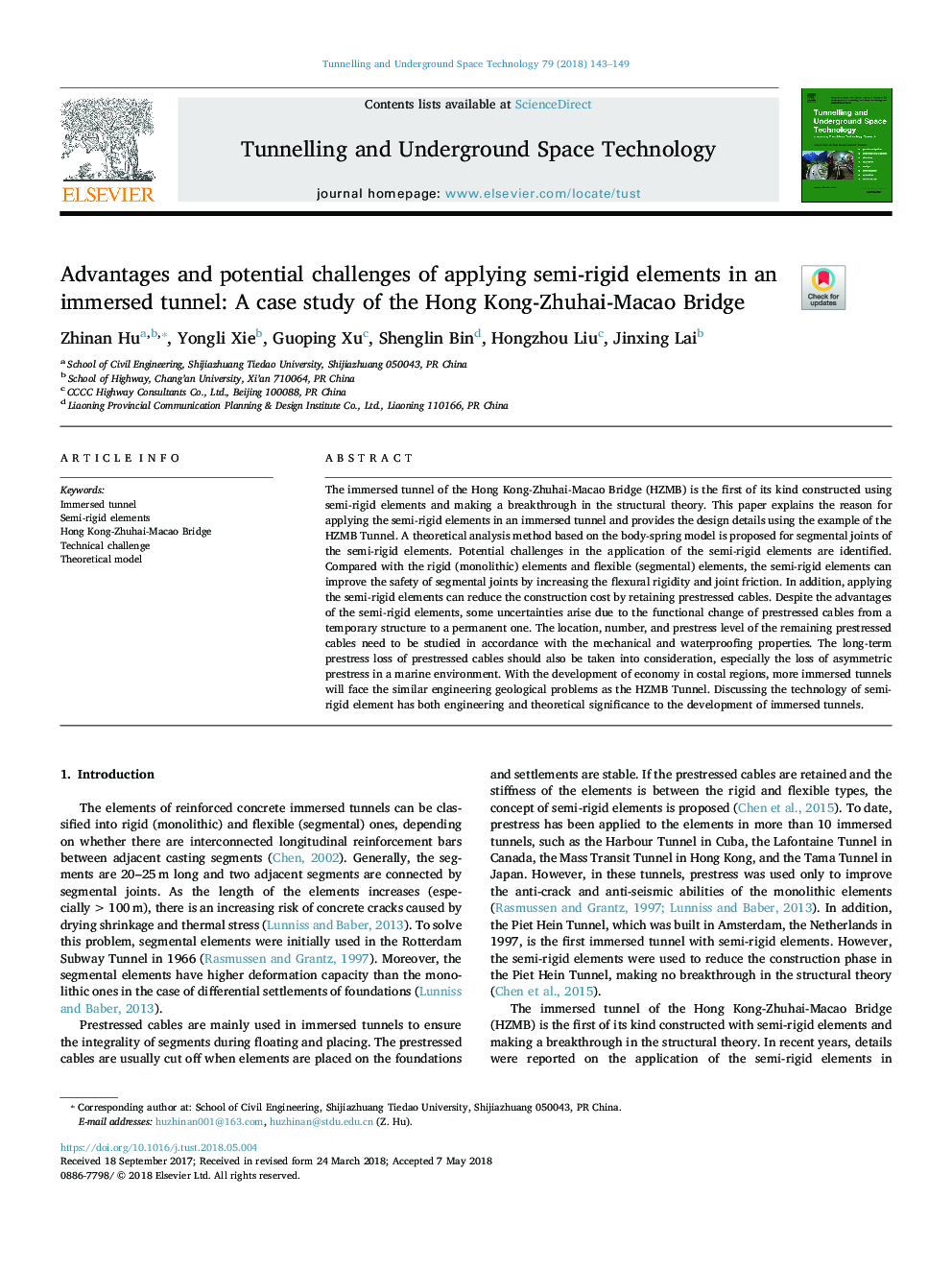| Article ID | Journal | Published Year | Pages | File Type |
|---|---|---|---|---|
| 6782256 | Tunnelling and Underground Space Technology | 2018 | 7 Pages |
Abstract
The immersed tunnel of the Hong Kong-Zhuhai-Macao Bridge (HZMB) is the first of its kind constructed using semi-rigid elements and making a breakthrough in the structural theory. This paper explains the reason for applying the semi-rigid elements in an immersed tunnel and provides the design details using the example of the HZMB Tunnel. A theoretical analysis method based on the body-spring model is proposed for segmental joints of the semi-rigid elements. Potential challenges in the application of the semi-rigid elements are identified. Compared with the rigid (monolithic) elements and flexible (segmental) elements, the semi-rigid elements can improve the safety of segmental joints by increasing the flexural rigidity and joint friction. In addition, applying the semi-rigid elements can reduce the construction cost by retaining prestressed cables. Despite the advantages of the semi-rigid elements, some uncertainties arise due to the functional change of prestressed cables from a temporary structure to a permanent one. The location, number, and prestress level of the remaining prestressed cables need to be studied in accordance with the mechanical and waterproofing properties. The long-term prestress loss of prestressed cables should also be taken into consideration, especially the loss of asymmetric prestress in a marine environment. With the development of economy in costal regions, more immersed tunnels will face the similar engineering geological problems as the HZMB Tunnel. Discussing the technology of semi-rigid element has both engineering and theoretical significance to the development of immersed tunnels.
Keywords
Related Topics
Physical Sciences and Engineering
Earth and Planetary Sciences
Geotechnical Engineering and Engineering Geology
Authors
Zhinan Hu, Yongli Xie, Guoping Xu, Shenglin Bin, Hongzhou Liu, Jinxing Lai,
